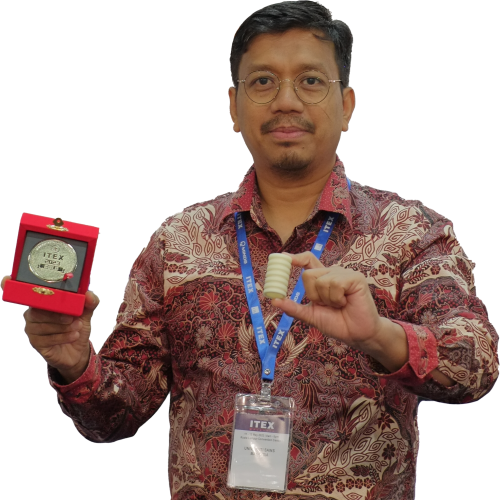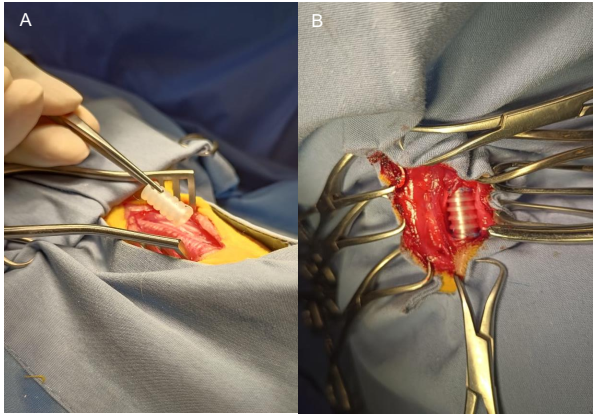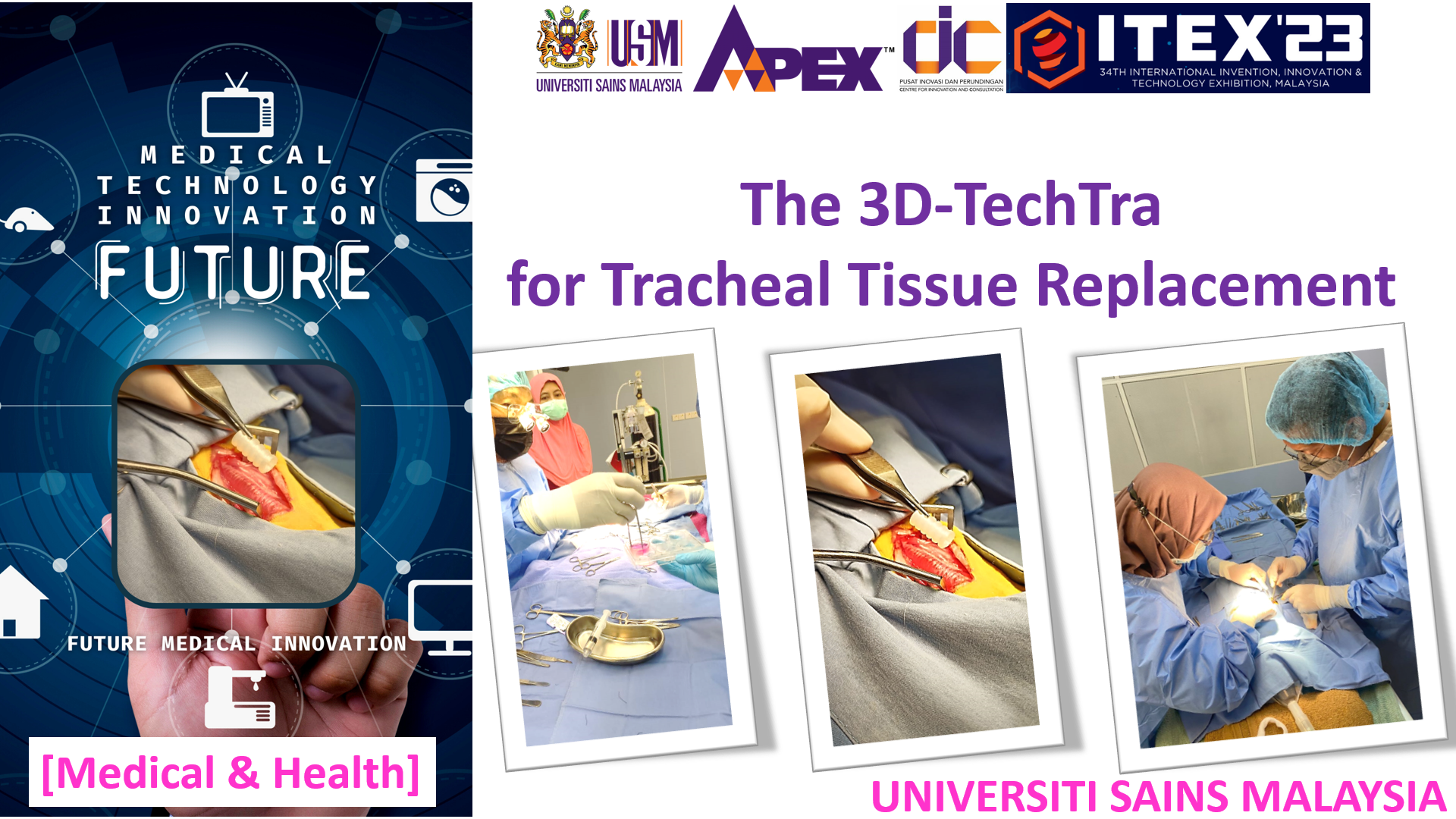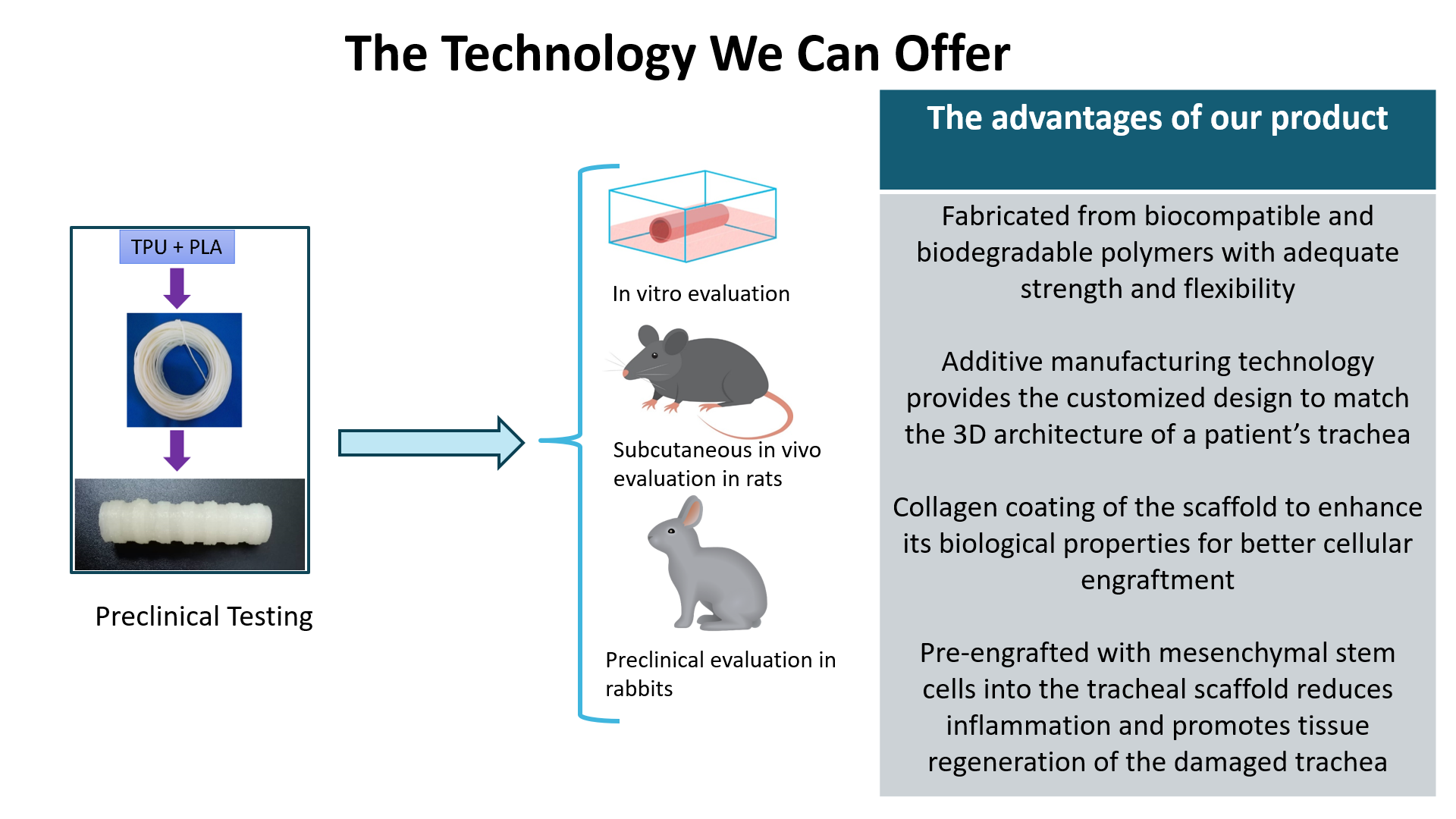The 3D-TechTra as a Bioengineered Scaffold for Tracheal Tissue Replacement

Assoc. Prof. Dr. Badrul Hisham Yahaya
Assoc. Prof. Ir. Ts. Dr. Zuratul Ain Abdul Hamid (Materials Engineering, USM)
Prof. Mariatti Jaafar (Materials Engineering, USM)
Dr. Muhamad Yusri Musa (ENT Specialist, IPPT USM)
Dr. Asmak Abdul Samat (UIAM)
The shortage of organs and tissues worldwide, especially for the trachea, poses a significant public health problem, despite the potential benefits of transplanting severely injured airways or trachea in improving the patients' quality of life. Although tissue engineering has shown promise for tracheal reconstruction, tissue-engineered tracheal grafts' clinical performance falls short of its theoretical potential. Naturally-derived biomaterials lack mechanical support, leading to tracheal collapse, while synthetic trachea offers good mechanical properties but lacks biological cues for cellular engraftment and differentiation. To address these challenges, our team has developed a 3D-printed hybrid trachea prototype called 3D-TechTra. This bioengineered scaffold is made of biocompatible and biodegradable polymers, providing adequate strength and flexibility. We also coated the scaffold surfaces with collagen to enhance its biological properties and improve cellular engraftment. Furthermore, stem cells were pre-engrafted in the scaffold to promote tissue regeneration of the damaged trachea. This innovation, funded by PRGS, has the potential to overcome the limitations of previous tracheal scaffold designs and improve the clinical outcomes of tracheal reconstruction.
Problem Statement
- A simple tube comprising a single continuous cartilage tissue section, which fails to mimic the natural ring structure and poor integration with the surrounding tissues.
- The clinical performance of tissue-engineered tracheal substitutes has yet to meet its theoretical potential, due to inadequate anatomy and function, thus leading to collapse and rupture.
- The risk of immunogenicity and rejection of the non-biological synthetic scaffold by the body's immune system, which can lead to inflammation and implant failure.
Novelty and Inventiveness
- Strength within standard ranges of human tracheal (1-15 MPa, mean ~ 14 MP.
- The material is biocompatible that prevents any toxic effects in cellular and animal models.
- Cellular adhesion and penetration to enhance tissue regeneration and functionality of the implanted trachea.
- Coated with mesenchymal stem cells reduces inflammatory response, facilitates in cell integration, and increases survival rates.
Applicability and Benefits
- Personalised trachea fabrication using 3D printing technology, which leads to reducing invasive surgery.
- Enhanced cellular integration and tissue regeneration, leads to functional trachea.
- Reduced inflammation and increased survival rate, thus improving recovering time and quality of life (QOL) of the patient.
- Sustainable product with low production cost (RM 89.19/scaffold).
- Create an impact on the medical device industry that enhances collaboration with healthcare providers.
Research Achievement
-
Grant Type and Amount: Nippon Sheet Glass Foundation for Materials Science and Engineering (International); RM 19, 192
-
Grants type and amount: SKIM GERAN PENYELIDIKAN PEMBANGUNAN PROTOTAIP (National); RM411,016.00
-
2 WoS-indexed publications : [Bioengineering 10 (4), 394: Q2; IF: 5.046], [Polymers 13 (18), 3087: Q1; IF: 4.432]
-
No of Students: 1 Ph.D student (Graduated, IIUM Lecturer)
Impact of Innovation
- Economy - Create new opportunities for medical device industries. The economic growth in tracheal scaffold & stent leads to the growth in medical tourism industry. Reduce healthcare costs by improving patient’s QOL.
- Industry - Impact on the medical device industry. 3D printing allows more flexible and cost-effective production. Create new partnerships between medical device industries and healthcare providers ininnovation.
- Society - Improve QOL of the patients. Provide a personalized solution, reducing the anxiety and stress associated with medical procedures.
- Healthcare - Improve the QOL of the patients. Personalized fabrication of the patient’s tracheal scaffold. Reduced risk of complication and increase recovery time. Reduce healthcare cost.
- Academia - Develop technology know-how on fabrication and optimization of 3D-TechTra bioengineered tracheal scaffold.
- Government - 3D-TechTra bioengineered tracheal scaffold will contribute in economic growth due to reduce dependence on imported bioengineered scaffold replacement products.





